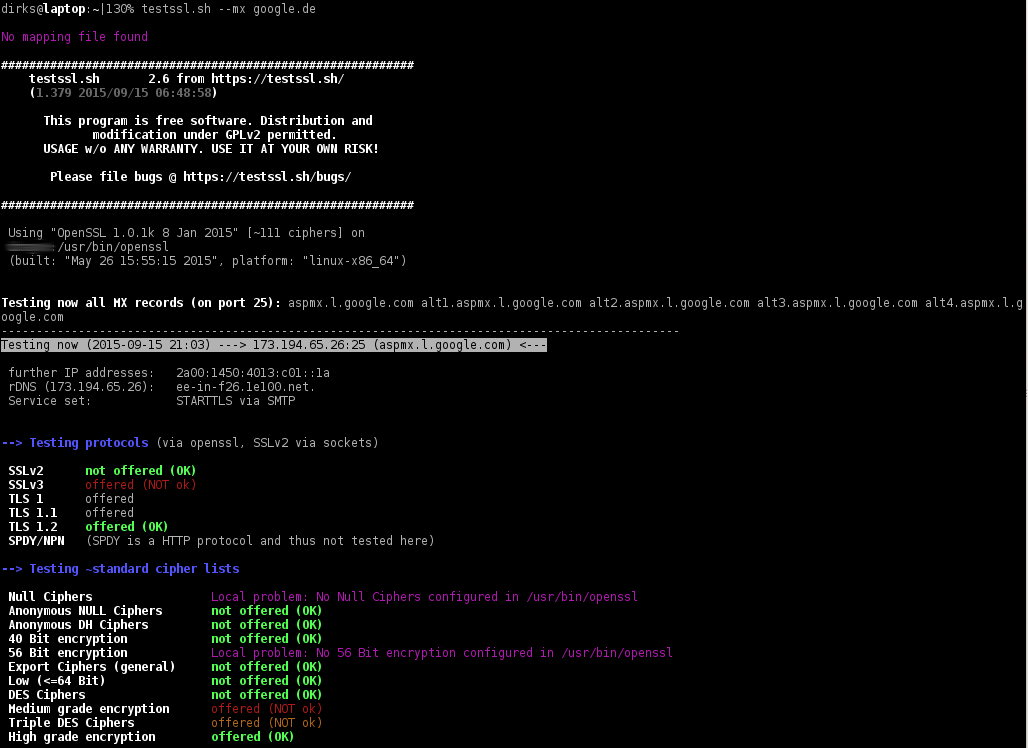View Dh Key Generated From Openssl Test Session
Run 'openssl genrsa' to generate a RSA key pair. Run 'openssl req -new -x509' to generate a self-signed certificate and stored it in PEM format. Run 'openssl x509' to convert the certificate from PEM encoding to DER format. The test session was recorded below. Users of the OpenSSL library are expected to normally use the EVP method for working with Diffie Hellman as described above and on the EVP Key Agreement page. The EVP api is implemented by a lower level Diffie Hellman API. In some circumstances, expert users may need to use the low level api. This is not recommended for most users. However, if you need to use this then an example of use is.
- View Dh Key Generated From Openssl Test Sessions
- View Dh Key Generated From Openssl Test Session 2016
- View Dh Key Generated From Openssl Test Session 2017
An example of using OpenSSL operations to perform a Diffie-Hellmen secret key exchange (DHKE). The goal in DHKE is for two users to obtain a shared secret key, without any other users knowing that key. The exchange is performed over a public network, i.e. Openssl generate rsa key pair der. all messages sent between the two users can be intercepted and read by any other user. The protocol makes use of modular arithmetic and especially exponentials. The security of the protocol relies on the fact that solving a discrete logarithm (the inverse of an exponential) is practically impossible when large enough values are used.
Wikipedia has a description and example of DHKE. My lecture slides on public key cryptography also include a description. My description of DHKE starts at about 39m 30s into the screencast available on YouTube. It includes a simple example starting at 47m 53s. View below to go straight to the DHKE portion of the lecture.
The.key file corresponds to the private key itself. If you open your.key file in a text editor you would see that they have -BEGIN RSA PRIVATE KEY- as the prefix and -END RSA PRIVATE KEY. This post is mostly a rehash of good advices I found on Ted's blog (Avoir une bonne configuration SSL avec nginx, in French). In a nutshell: go and check your SSL configuration with the Quarlys SSL Server Test. One way to make dragnet surveillance as expensive as possible is to enable HTTPS by default on all our websites, reducing the amount of cleartext data flowing in the Internet pipes. OpenSSL 'ca' - Sign CSR with CA Certificate How to sign a CSR with my CA certificate and private key using OpenSSL 'ca' command? I think my configuration file has all the settings for the 'ca' command. If you have you configuration file ready and all the required directories and files created, you can sign a CSR with your CA certificate and p. $ openssl pkeyutl -derive -inkey dhkeyD.pem -peerkey dhpubm.pem -out segreto1.bin What are the parameters used for dhpubm.pem? The parameters used for that and for dhkeyD.pem must be the same - but you have generated a completely new set of parameters in the steps above. Get hold of the parameters for dhpubm.pem and regenerate a fresh DH key based on those params. Run 'openssl genrsa' to generate a RSA key pair. Run 'openssl req -new -x509' to generate a self-signed certificate and stored it in PEM format. Run 'openssl x509' to convert the certificate from PEM encoding to DER format. The test session was recorded below.
OpenSSL provides both a library of security operations you can access from your own software, as well as a command line mode. In the past I've given examples of using OpenSSL to generate RSA keys as well as encrypt and sign with RSA. In the following I demonstrate using OpenSSL for DHKE.
DHKE is performed by two users, on two different computers. For my demo I do everything on one computer. The steps performed by each user are the same, but just with different files. In the following there is user 1 and user 2.
Steps for Diffie-Hellman Key Exchange with OpenSSL
Generate the Diffie-Hellman global public parameters, saving them in the file dhp.pem:
Display the generated global public parameters, first in the encoded form, then in the text form:

Each user now uses the public parameters to generate their own private and public key, saving them in the file dhkey1.pem (for user 1) and dhkey2.pem (for user 2):
The other user uses the same public parameters, dhp.pem, to generate their private/public key:
The users must exchange their public keys. First extract the public key into the file dhpub1.pem (and similar user 2 creates dh2pub.pem - this step is not shown below):
View Dh Key Generated From Openssl Test Sessions
After exchanging public keys, i.e. the files dhpub1.pem and dhpub2.pem, each user can derive the shared secret. User 1 performs the following to output the secret, a 128 Byte binary value into the file secret1.bin:
The other user does the same using their private key and user 1's public key to produce secret2.bin:
The secrets should be the same:
PDF version of this page, 27 Jan 2013
View Dh Key Generated From Openssl Test Session 2016
Created on Sun, 27 Jan 2013, 1:24pm
View Dh Key Generated From Openssl Test Session 2017
Last changed on Mon, 03 Nov 2014, 10:46am